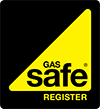If your radiators aren’t heating up as much as they should be, or if they’re cold at the top and warm at the bottom, it’s likely that there’s air trapped inside. To make sure your home can be toasty and warm again, you’ll need to ‘bleed’ your radiators.
Bleeding your radiators is a quick process - to let the trapped air out, it’s as simple as opening a valve and letting the radiator do the rest.
Providing that your radiators aren’t faulty, you shouldn’t need a plumber to visit your home - here’s how to bleed your radiators yourself in 5 simple steps:
To prevent any more air getting into your radiators, make sure you turn off your central heating before you start to bleed your radiators.
Tip: When you turn off your individual radiators, keep count of how many times you need to turn the valves so you don’t turn them too far - this can stop your boilers from working properly.
Locate the bleed valve on your radiator, this is often on the opposite side to the temperature regulator, but it might be on the back, top or bottom depending on the make.
Some bleed valves have red markings on them to make them stand out, but if yours doesn’t, you’ll know it’s the right valve because it’ll have a clear place for the radiator key to fit into.
Your radiators will also have come with a small key that you will need to use to bleed them. Don’t worry if you can’t find it - you can find a replacement quite easily in a DIY shop or online.

Insert the key into the valve and turn it anti-clockwise. Remember to do this gently - it shouldn’t need a full turn, so don’t turn the key too quickly.
You should be able to hear the air leaving your radiator, and you know it’s done when water begins to trickle out.
Tip: Have a small bowl or a cup at the ready to catch the fluid that comes out of your radiator and a cloth to hand, as this fluid can be dark in colour. Also, if you have had your heating on recently, keep a cloth around your hand, in case the radiator fluid is hot.
Once water is coming out of the valve, your work is done and it’s time to close it back up. Use your key to tighten the bleed valve and clean up any spilled water.
After you’ve bled your radiators, it’s important that you turn your central heating back on to make sure everything’s working.
Before you turn the heating back on, check the water pressure gauge or indicator, which is usually on the front of your boiler. For most boilers, this should be set around the 1 bar, but check the requirements for your boiler. If the pressure needs topping up, you can do this according to your boilers instructions.
After a little while, come back to your radiator and you should find that the temperature is now more even and that there’s no water leaking from the bleed valves.
If your radiators are back in working order and there’s no water trickling down from the valve, then you’re good to go, but if your radiators are still not working as they should be, then they will need further attention from a professional. If you need any help with getting your radiators back in working order, get in touch with our team, who will be happy to assist.
Complete the form below and one of the Plumbcare.com team will get back to you as soon as possible.





